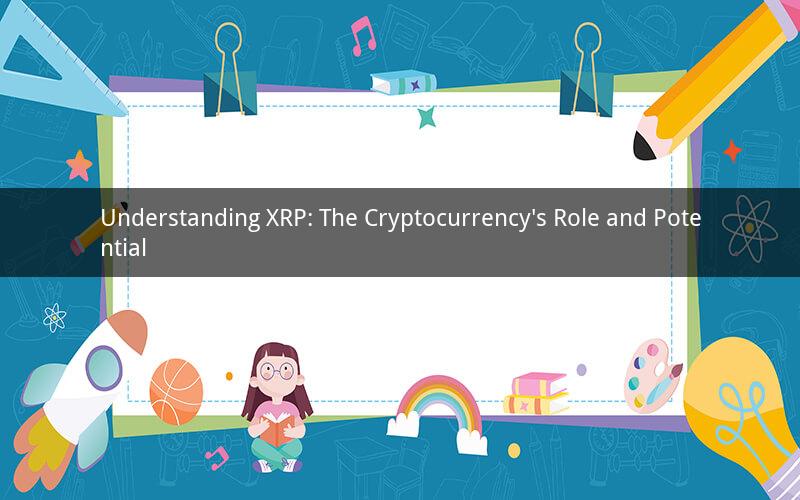
In the rapidly evolving world of cryptocurrency, XRP has emerged as a significant player, often overshadowed by the likes of Bitcoin and Ethereum. This article delves into what XRP is, its unique features, and its potential impact on the crypto market.
What is XRP?
XRP, also known as Ripple, is a digital asset and a payment protocol designed to enable fast, secure, and low-cost international financial transactions. Unlike Bitcoin and Ethereum, which are primarily used as digital currencies, XRP serves as a bridge currency to facilitate transactions between different fiat currencies and other digital assets.
XRP's Key Features
1. Speed: XRP transactions are completed in just a few seconds, making it significantly faster than traditional banking systems. This speed is achieved through Ripple's consensus protocol, which eliminates the need for mining and reduces the time required for confirmations.
2. Cost-effectiveness: XRP transactions are extremely affordable, with transaction fees being much lower than those of other cryptocurrencies. This makes it an ideal choice for businesses and individuals looking to minimize their transaction costs.
3. Scalability: XRP's network can handle up to 1,500 transactions per second, far exceeding the capacity of traditional payment systems. This scalability ensures that the network can accommodate a high volume of transactions without experiencing delays or congestion.
4. Interoperability: XRP's primary purpose is to act as a bridge currency, enabling seamless transactions between different fiat currencies and digital assets. This interoperability makes it an attractive option for financial institutions and companies looking to expand their reach into the crypto market.
The RippleNet Platform
RippleNet is Ripple's global network of financial institutions, banks, and payment providers that use XRP to facilitate international transactions. This platform has gained significant traction over the years, with over 300 financial institutions and payment providers currently participating in RippleNet.
The RippleNet platform offers several benefits:
1. Reduced settlement time: By using XRP as a bridge currency, financial institutions can significantly reduce the time required to settle international transactions, from days to just a few seconds.
2. Lower transaction costs: XRP's low transaction fees help financial institutions save money on cross-border payments, making it an attractive option for businesses and consumers.
3. Enhanced security: RippleNet utilizes advanced security measures, such as the consensus protocol and digital signatures, to ensure the safety and integrity of transactions.
XRP's Potential Impact on the Crypto Market
Despite facing regulatory challenges and criticism from some quarters, XRP remains a significant player in the cryptocurrency market. Here are some potential impacts of XRP on the crypto market:
1. Increased adoption: As more financial institutions and payment providers join RippleNet, the demand for XRP is likely to increase, potentially boosting its value.
2. Improved interoperability: XRP's ability to facilitate transactions between different fiat currencies and digital assets could drive broader adoption of cryptocurrencies in the financial industry.
3. Competition for Bitcoin and Ethereum: XRP's fast, affordable, and scalable features could make it a viable alternative to Bitcoin and Ethereum, potentially impacting their market dominance.
5 Questions and Answers about XRP
1. Question: What is the difference between XRP and Ripple?
Answer: XRP is a digital asset, while Ripple is the company that developed the RippleNet platform and XRP. XRP is used as a bridge currency within the RippleNet platform.
2. Question: Is XRP a security or a currency?
Answer: XRP is classified as a currency, not a security. However, some regulatory bodies have expressed concerns about its nature, leading to ongoing debates in the industry.
3. Question: Can XRP be used for everyday transactions?
Answer: While XRP is primarily used for international transactions, some businesses and individuals have started to adopt it for everyday transactions. However, its adoption remains relatively low compared to Bitcoin and Ethereum.
4. Question: How does XRP compare to Bitcoin in terms of transaction speed and cost?
Answer: XRP is significantly faster and more cost-effective than Bitcoin. XRP transactions take just a few seconds and have very low fees, while Bitcoin transactions can take up to 10 minutes and have higher fees.
5. Question: Is XRP a good investment?
Answer: Like any investment, the potential of XRP depends on various factors, including market trends, regulatory developments, and technological advancements. While XRP has the potential to grow, it is essential to conduct thorough research and consider your risk tolerance before investing.
In conclusion, XRP has emerged as a significant player in the cryptocurrency market, thanks to its unique features and potential to facilitate fast, secure, and cost-effective international transactions. As the RippleNet platform continues to expand, the future of XRP remains bright, with the potential to impact the crypto market and financial industry as a whole.